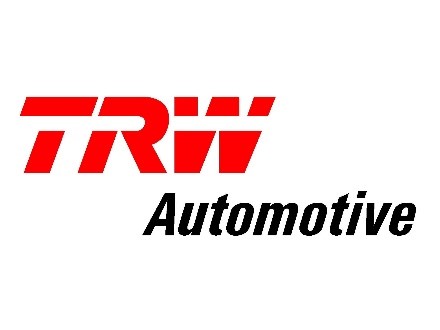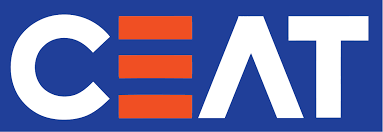
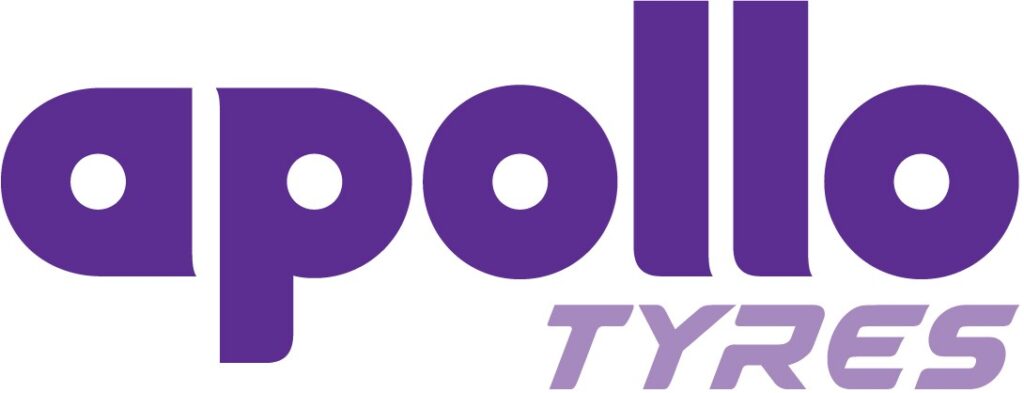
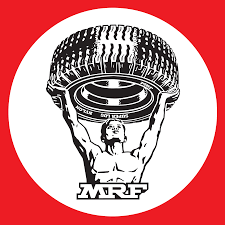
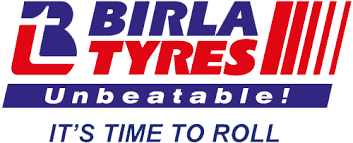
The tyre industry in India has been, perhaps, the most persecuted for competition law violations since the days of the erstwhile MRTPC[1] . What is most interesting is a single complainant, an Individual, one Mr SP Singh who represents the All-India Tyre Dealers’ Federation (AITDF) who has been filing complaint against 5 leading tyre brands[2] and the trade association, Automotive Tyre Manufacturers Association (ATMA) in India albeit unsuccessfully till now. The tyre companies along with ATMA had successfully defended the allegations, mainly of coordinated price rise as the previous cases filed before MRTPC and even CCI were closed at prima facie stage in the absence of evidence.
However, recently, the 5 domestic tyre companies and ATMA seemed to have run out of luck. When the Supreme Court of India vide its order dated 28/01/2022 dismissed the Special Leave Applications filed by M/s CEAT Ltd against the final judgment dated 06-01-2022 in WA No.529/2018 passed by the Division Bench of the Madras High Court wherein the High Court had rejected the prayer to quash the Order of the Single Bench dated 6.3.2018 of the same High Court which had refused to quash an order dated 24.6.2014 passed by the Competition Commission of India (CCI) directing investigation against the five tyre manufacturers alleged to be involved in cartelization. The main reason which led the Apex Court to dismiss the SLP against the Madras High Court judgment was the facts that (i) investigation as ordered by the CCI had already been completed by the Director General (DG) and the report of the investigating officer had also been submitted before the Commission. , (ii) All the parties had taken part both during the DG investigation as well as during the subsequent inquiry proceedings before the Commission and advanced their arguments and that, (iii) the final order passed by the CCI was kept in a sealed cover as per the order dated 8.3.2018 passed by the Division Bench of the Madras High Court.
The Apex Court found no ground to interfere with the judgment of the Madras High Court wherein it had observed that even after getting the said final order from CCI, the parties, will still have the legal remedy in the form of appeal before NCLAT open to them.
After the rejection of the SLP by the Apex Court, CCI finally published its final order on 03.02.2022 which was passed on 31.8.2018. CCI has found all the 5 domestic tyre brands and ATMA guilty of cartelization and has imposed penalties calculated at the rate of 5% of average turnover for the last three preceding financial years on each of the said 5 Tyre companies and also penalty at the rate of 5% of total receipts for the three years upon ATMA. Besides, penalties at the rate of 5% of average of the income for the last three preceding financial years have also been imposed on individual directors and other Key Management Persons of the 5 tyre companies and the Director General of ATMA.
Background-
The case was initiated by way of reference received from the Ministry of Corporate Affairs (MCA) under Section 19(1)(b) of the Competition Act, 2002 (the Act) , whereby it had forwarded the representation filed by Mr SP Singh Convenor of AITDF alleging that domestic tyre manufacturers such as Apollo Tyres Limited (‘OP-1’), MRF Ltd. (‘OP-2’), CEAT Ltd. (‘OP-3’), JK Tyre and Industries Ltd. (‘OP-4’), Birla Tyres Ltd. (‘OP-5’) and Automotive Tyre Manufacturers’ Association (‘ATMA’/‘OP-6’) with the following allegations :
Allegations
- OP-1 to OP-5 controls 90% of the tyre production and have engaged in cartelization under the aegis of ATMA wherein OPs raised the prices of tyres and tubes on the pretext of increase in prices of natural rubber and other inputs, but subsequent reduction in the prices of these raw materials was not followed by a corresponding decrease in the price of tyres.
- In 2005, Price of natural rubber increased from Rs. 78/kg to Rs. 114/kg and the tyre prices were raised across the board by 12-15% but when the prices of rubber went down to Rs. 82/kg, the subsequent roll back in tyre prices was only to the tune of 3-4%.
- In 2008, prices of natural rubber increased from Rs. 75/kg to Rs. 142/kg and crude oil prices also shot up from $65/barrel to $140/barrel, prices increased across all categories of tyres by 17-22% but when in December 2008/ January 2009 natural rubber prices dropped to Rs. 69/Kg, crude oil prices decreased and excise duty on tyres was also slashed, the tyre prices were not rolled back.
- When in 2011-12, natural rubber prices shot up to Rs. 240/kg, tyre prices were hiked by 18-25%, but when the natural rubber prices dropped to Rs. 145/kg in 2013-14, there was no corresponding drop in the tyre prices.
- It was also alleged that OP-1 to OP-5 were also imposing tariff and non-tariff barriers through their trade association OP-6 to strengthen their control on the domestic tyre market
Prima facie order
CCI vide its order date 14 June 2014 formed its prima facie opinion that the act of not passing on the benefit of reduction in prices of major raw materials/ inputs by the OPs to the tyre consumers indicated lack of competition amongst them and some sort of understanding between them especially in the replacement market and accordingly directed the DG to cause an investigation into the matter.[3]
DG investigation
DG in its investigation noted the high concentration in the domestic tyre market with OP-1 to OP-5 having combined market share in terms of turnover of around 83%. DG noticed that Truck-bus bias or cross ply segment constituted about 74% of the total domestic sales as compared to about 26% of Truck-Bus Radial (TBR) tyre segment and also constitute about 38% of the total revenue of the domestic tyre industry. For the purpose of price comparison or analysis DG used Net Dealer Price (NDP) as domestic market was primarily driven by it and is applicable across the country as the same is not only inclusive of local freight charges, but also that it is upon the dealers to pass on the discounts or incentives to the end customers depending upon the market conditions. DG investigation returned the following findings:
(i) Price of natural rubber and other key raw materials including the derivatives of crude oil, increased considerably in the years 2010-11 and 2011-12, which resulted in decline in the operating margins (EBITDA) for the OPs in the said period. However, on easing of input cost pressures in 2012-13 and 2013-14, EBITDAof the OPs increased significantly but despite considerable decline in key raw material prices in the year 2013-14, the OPs reduced the TBB tyre prices by a small range only. The evidence strongly indicated that the OPs had acted in a concerted manner to increase and maintain the tyre prices at higher levels despite significant decline in the prices of natural rubber and other key raw materials.
(ii) Price movement of tyres of the OPs by comparing the top selling and most representative variant of the TBB tyre segment during the five year period (1st March, 2009 to 28th Feb, 2014) moved in tandem and in similar direction.
(iii) In absolute terms of the prices of tyres and price revision by the OPs exhibited strong price parallelism in the domestic tyre industry and high degree of positive pairwise correlation between the absolute tyre prices charged by the OPs during the period of 2011-2014 thereby indicating movement of tyre prices in tandem. For instance, in the years 2011-12 and 2012-13, the percentage of price increase was nearly identical in-spite of the fact that the OPs operated at different efficiency levels.
(iv) Record of ATMA (OP-6) clearly revealed s that the association, through various meetings of expert group level and sub-group level (comprising of only five member companies i.e. OP-1 to OP-5), of which no minutes were maintained and this provided the OPs ample opportunities to meet and discuss about the cost, price and profit margin, at regular intervals.
(v) DG found email communications relating to exchange of commercially sensitive information/ pricing strategy between the OPs which defy any business rationale except the intent for a coordinated action. DG found Email communications in the month of May 2011 between MRF (OP-2) and Apollo (OP-1) and the the Director General, ATMA (OP-6) with regard to pricing strategy for price increase despite softening of natural rubber prices to maintain a healthy EBITDA margins, suggesting active collusion in the form of an ‘agreement’ in terms of Section 2(b) of the Act, to indirectly determine the tyre prices.
(vi) An unusual stability in production and the inter se market share of the OPs, particularly in the replacement market, was noticed during the period 2011-12 to 2013-14 . The capacity utilisation figures of the OPs indicated excess capacity in the TBB tyre segment, but despite that the OPs chose not to compete in the market and settled stable share.
(vii) The analysis of financial performance of the OPs strongly suggested about success of a cartel, as the OPs could achieve unusually high growth in operating margins (EBITDA) when compared with the growth in demand/turnover of TBB tyres during the three-year period from 2011-12 to 2013-14.
Based on the above, the DG had concluded that OP-1 to OP-5, under the aegis of the ATMA (OP-6) indulged in cartel activity by indirectly determining the sale prices of TBB tyres from 2011-12 to 2013-14 in the domestic tyre market in contravention of the provisions of Section 3(3) (a) read with Section 3(1) of the Act.
CCI Findings
Market Structure: CCI noted that Indian tyre Industry consist of 39 companies with 60 manufacturing units. 13% of truck/ bus tyres are sold to OEMs while 87% are sold in the replacement market. In case of passenger vehicles segment such as car, sport utility vehicle, etc., 48% are sold to OEMs while 52% are sold in replacement market. Further truck and bus tyre production/ demand is the major segment with over 60% of the total size of the tyre market. There are two types of tyre in terms of ply reinforcement:
- cross ply or bias tyres: Only 2% passenger car segment use it on the other hand 76% bus and truck segment.
- Radial tyres: has a longer life and offers higher fuel efficiency and hence, over the life of the tyre, it is effectively cheaper than cross ply tyres. 98% passenger car segment use it and only 24% in bus and truck segment.
Market Concentration:
10 member companies of OP-6 together hold 95% share in the market. Further the 5 OPs together control 83% of the tyre market in India and in terms of production of cross ply/ bias type tyres belonging to truck bus tyre segment during 2011-12 to 2013-14, they constituted around 93% to 95% of the Indian tyre industry.
Based on the above market share CCI noted that the market the market is highly concentrated with a few players holding the large chunk of the market indicating strong possibility of a conducive environment for collusive behaviour.
Price parallelism
CCI for the purpose of examining the alleged contravention pertaining to cross ply/ bias variant belonging to truck-bus tyres, the Commission, agreeing with the DG investigation report , considered Net Dealer Price (NDP or NBP) which are issued by OPs for intimating price change from time to time.
CCI noted that in terms of absolute NBP/ NDP of a single leading variant belonging to cross ply/ bias type in the truck-bus tyres segment sold by the OPs from 2009 to 2014 have been moving in tandem clearly exhibiting price parallelism. The prices have gradually increased and stabilised at a certain level.
Price revisions effected in the above tyre category undertaken by the OPs during the years 2009 to 2014 showed that the prices have moved in the same direction and have varied within a small range, albeit not by identical percentage. Further it was also noted that correlation coefficient between absolute prices of the OPs during the period March 2009- February 2014, show very high correlation, i.e., more than 0.97 in all cases (barring that for OP-5 in March 2011-February 2013).
Based on the above prices analysis of leading variant of cross ply/ bias tyres belonging to truck bus segment, the Commission noted that the direction and close range of percentage change in prices and the high correlation coefficients seen in conjunction indicate parallel pricing behaviour. However, since parallel pricing alone cannot prove a cartel, CCI also noted the presence of some corroborative “plus factors’, as under.
Plus factors:
- Raw
material Price: CCI noted that key raw materials in manufacturing of
tyres and their % Share in Full Costs of tyre are Natural Rubber (30%), Nylon Tyre Cord Fabric (14%),
Excise Duty(10%), Synthetic Rubber(8%), Carbon Black(8%), Rubber Chemicals (7%).
- Though there was downward trend in the cost of raw materials consumed as percentage of sales by the OPs after 2010-11 but all of them uniformly increased the price of their respective variants of tyres in the said tyre category.
- The market shares of OP-1 to OP-5, both in terms of production of cross ply or bias tyre in the truck bus segment as well as in terms of sale of cross ply or bias tyre belonging to the truck bus segment in the replacement market, were also stable during 2011-12 to 2013- 14 and such stability in the market share in the replacement market indicates that OP-1 to OP-5 were not competing with each other during 2011-12 to 2013-14 in spite of decrease in prices of inputs.
- The sale of cross ply or bias tyre by OP-1 to OP-5 in the replacement market as a proportion of production of cross ply or bias tyre by OP-1 to OP-5 remained more or less stable for the OPs indicating that there existed limited competitive constraint by them upon each other’s sale in the replacement market.
- Finally, the overall financial performance of OP-1 to OP-5 and that the operating margin/EBITDA of all the OPs except that of OP-5 has remained positive from 2009-10 till 2013-14. CCI observed that merely achieving positive operating margin though not a competition issue; but if the same is achieved through coordinated conduct as reflected in terms of price parallelism, maintaining stability of market shares etc., it indicates distortions in the competitive landscape.
Role of ATMA– In addition to the above plus factors which seemed to corroborate the possibilityof coordination between the OPs, the role played by ATMA, their trade association, was another strong factor in the decision of the Commission. : During investigation various email communications were unearthed by the DG which clearly revealed that there were regular communications between the OPs via emails in which price sensitive information were exchanged between them. Further it was also noted that OP-6 provided a platform through which such communications were made possible.
OP-6 had also constituted various sub-groups which held regular meetings. It was also noted that OP-6’s expert group and various sub group meetings had served as a platform where OP-1 to OP-5 were regularly meeting on some pretext or the other and no minutes of meeting had been maintained by OP-6. Such conduct of OP-6 clearly points towards its malicious intention of hiding some illegal activities including discussion on increase in tyre prices etc. In one such meeting of the purchase group, a sensitive topic pertaining to Raw Material Cost Increase v. Tyre Price Increase and the ‘Gap’ between them was discussed followed by subsequent tyre prices increase by OP-1 to OP-5 in a concerted manner. Such increase was implemented in the truck bus bias/ cross-ply variant tyres sold in the replacement market. ATMA also used to collect and compile information relating to company wise and segment wise data (both monthly and cumulative) on production, domestic sales and export of tyres on a real time basis much prior to the publishing of quarterly results in the public domain. Such compiled data was circulated amongst its members as well. The sharing of such sensitive information made the co-ordination easier amongst the OPs.
CCI based on the above “plus factors” concluded that platform of ATMA was used by the tyre companies for resorting to anti-competitive activities and not merely for protecting the legitimate interests of OP-6’s members. Further various sub group meetings of OP-6, email communications and the follow up in terms of price increase, compilation and circulation of product and export data strongly indicate the existence of an agreement, arrangement and understanding amongst OP-1 to OP-5 by using the platform of OP-6 for sharing of information, as well as communications regarding pricing and production amongst themselves. These provided strong evidence of coordinated behaviour and revealed the existence of an anti-competitive agreement amongst the OPs.
CCI Order –
Consequently, CCI vide its order dated 31.8.2018 concluded that that the OPs, by acting “in concert”, have increased the prices of cross ply/ bias tyres variants sold by each of them in the replacement market belonging to the truck/ bus segment and have also limited and controlled the production and supply in the said market thereby clearly contravening the provisions of Section 3(3)(a) and 3(3)(b) read with Section 3(1) of the Act.
Penalty –
CCI imposed penalties calculated at the rate of 5% of average turnover for the last three preceding financial years on each of the OP-1 to OP-5 as well as on ATMA at the rate of 5% of total receipts for the three years in terms of Section 27 (b) Of the Act, as under:
- OP-1 Apollo Tyres – INR 425.33 Crores
- OP-2 MRF Tyres- INR 622.09 Crores
- OP-3 CEAT Tyres -INR 252.16 Crores
- OP-4 JK Tyres – INR 309.95 Crores
- OP-5 BIRLA Tyres -INR 178.33 Crores.
- ATMA-INR 8,41,737
Besides, penalties were also imposed on individual directors and other key managerial persons of the 5 tyre companies and the DG of ATMA at the rate of 5% of average of the income for the last three preceding financial years.
COMMENTS: The CCI order, passed in 2018, has jolted the 5 major domestic tyre companies. The impact of the huge penalties imposed is visible in the falling of the stocks of each of the listed companies. However, restricting the inquiry into the pricing patterns of only 5 domestic companies, leaving Global players like Goodyear, Continental, Bridgestone, and even TVS, which had also participated during the meetings of the various sub groups of ATMA, ignoring the specific objections of “cherry picking” made by some of the OPS to the DG investigation, has come as a bit of surprise. Madras High Court judgment in the case of Hyundai Motor India Ltd. v. Competition Commission of India and Ors. [4] , which validated the DG’s powers to add third parties not named in the original information, had relied heavily on the earlier Supreme Court judgment in the Excel Crop Care case[5] of May 2017, must have been in the knowledge of the CCI while passing this order. The order is likely to be challenged before the Appellate Tribunal, the NCLAT, where such issues will hopefully be addressed.
#Apollo # MRF#CEAT #JKTyres#Birlatyres #Cartel#Competition
[1] Monopolies & Restrictive Trade Practice Commission
[2] Apollo , CEAT, MRF, JK & Birla Tyres ,
[3] Noticeably, MRF had challenged this prima facie order of CCI in Madras High Court, which on being rejected by the Single Bench vide order dated 6.3.2018 was , in the Writ Appeal filed before Division Bench , was also not stayed vide order dated 8.3.2018 but the CCI was directed not to publish the final order and keep it in a sealed cover till final disposal of the Writ Appeal. Therefore , in the absence of any stay order , the DG investigation and the subsequent CCI inquiry continued and the parties had no option but to participate in them .
[4] W.A.No.340 of 2015 and M.P.No.1 of 2015 delivered on 23.7.2018
[5] 2017 (8) SCC 47-Excel Crop Care Ltd., Vs. Competition Commission of India, delivered on 8.5.2017



